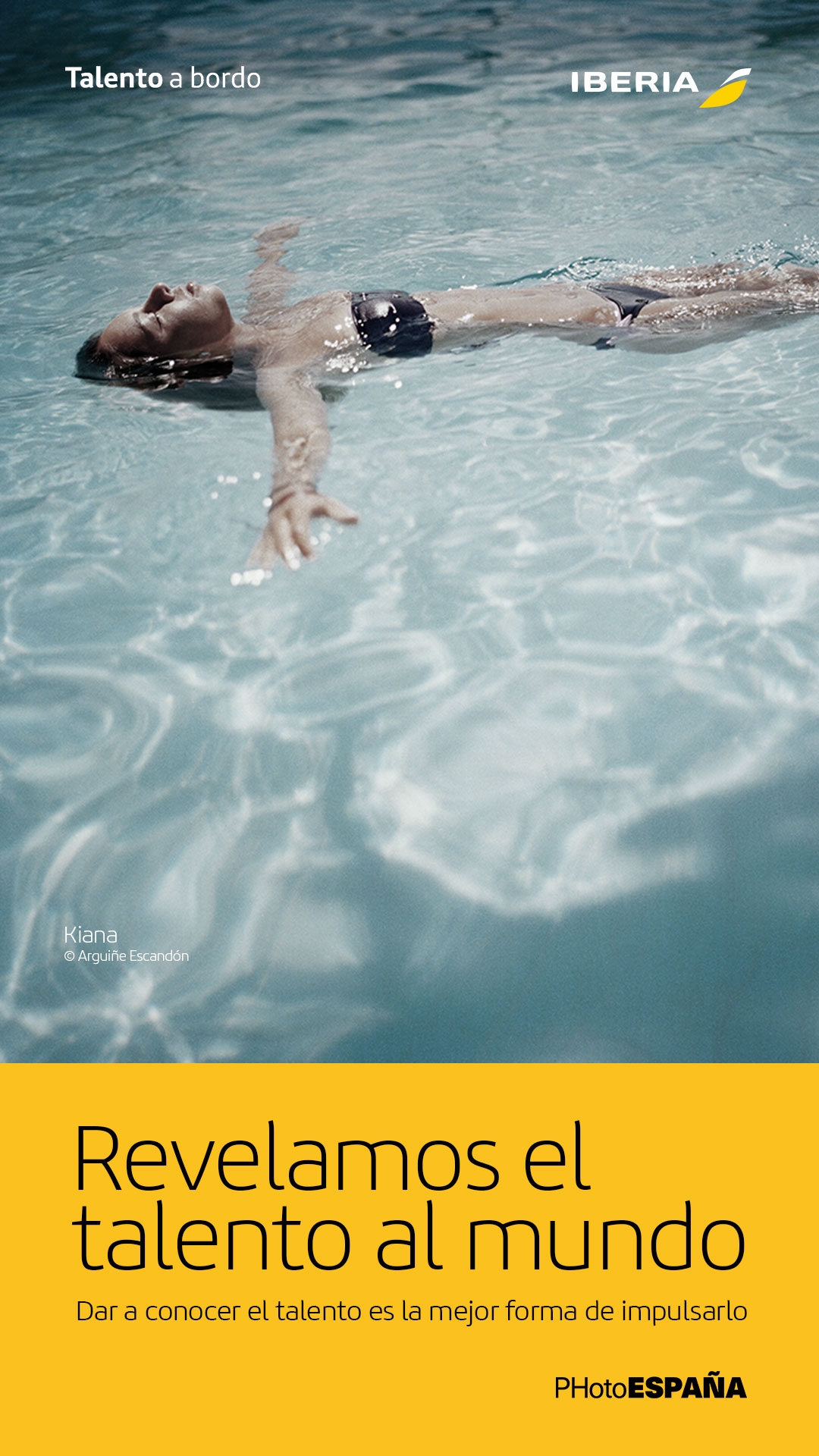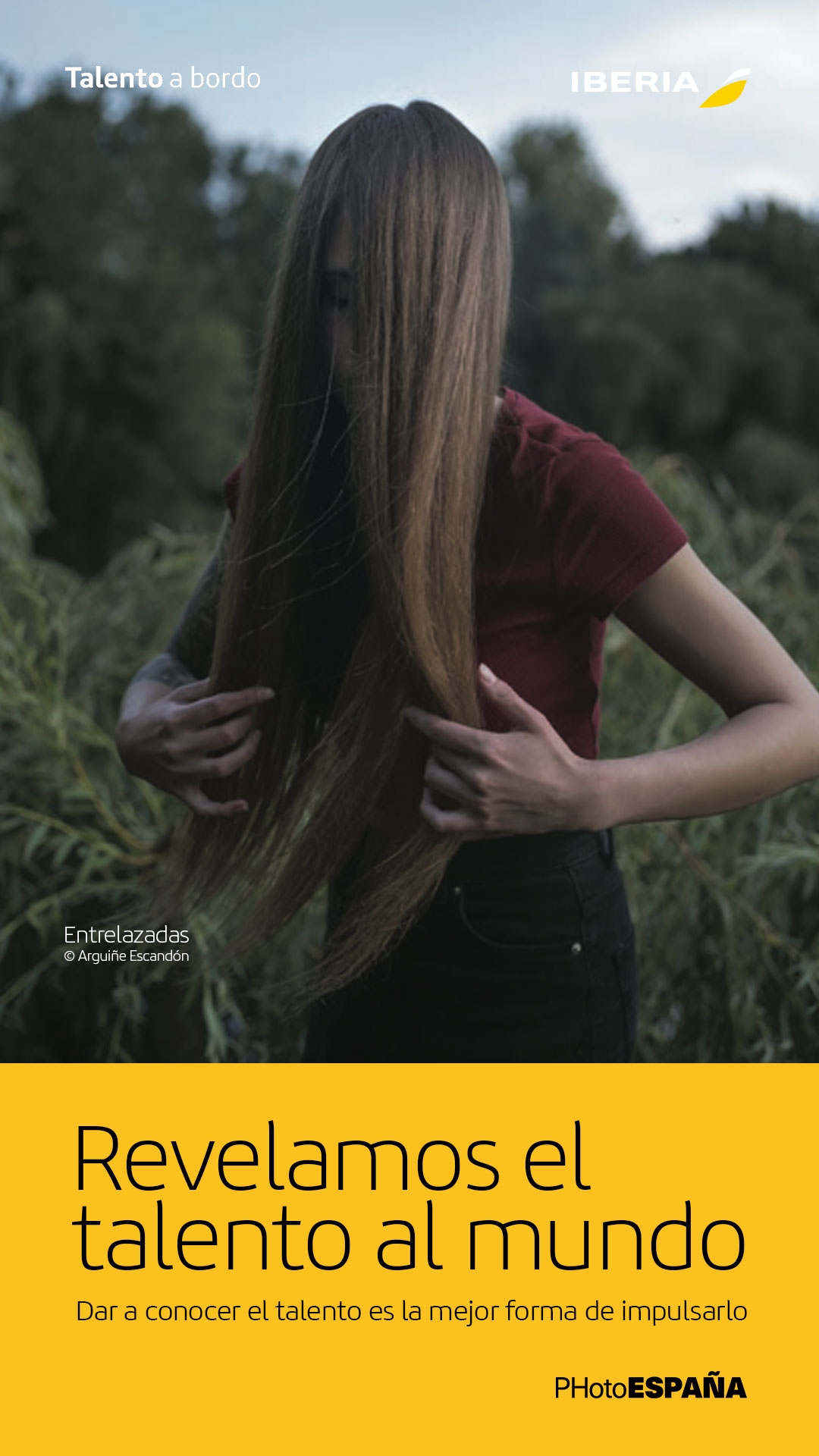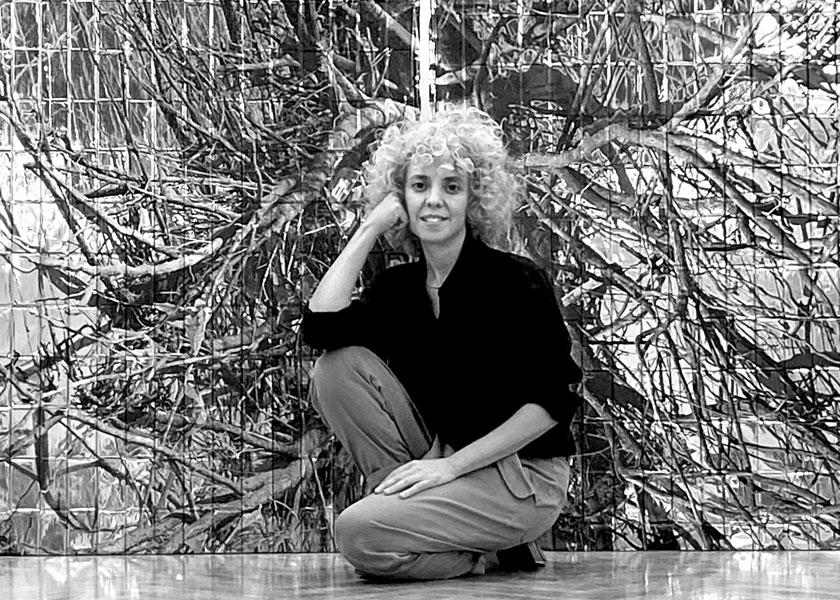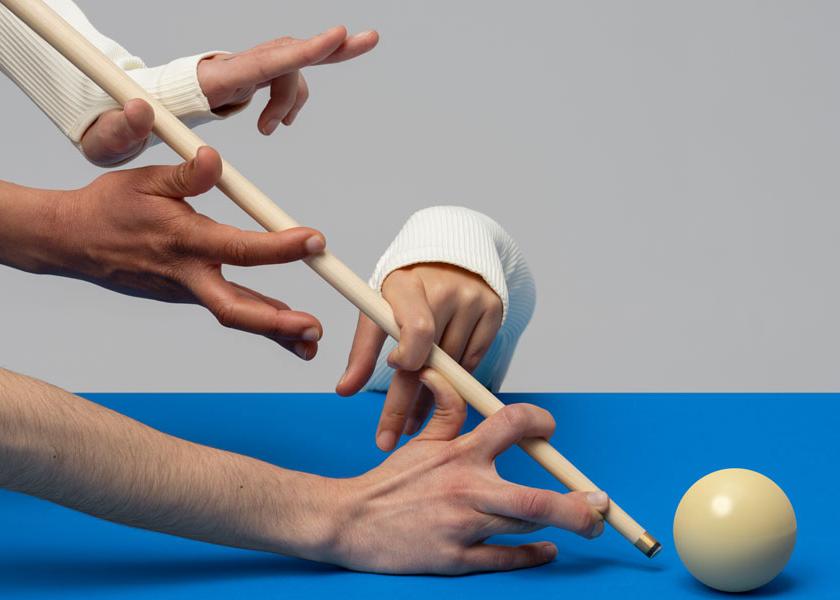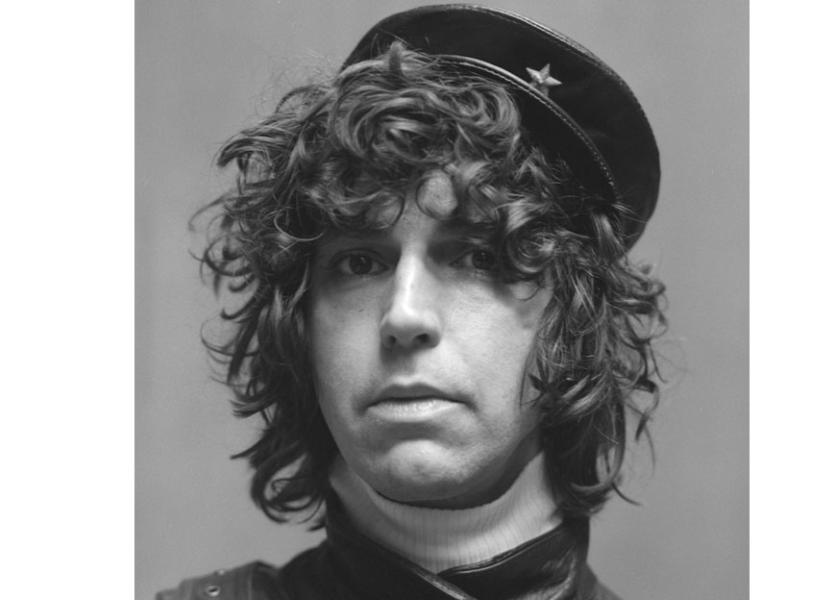Arguiñe Escandón
Moving through photography

Photographer Arguiñe Escandón is the star of Iberia’s campaign in collaboration with PHotoESPAÑA, ‘Revealing talent to the world', and in this interview, she invites us to experience and open up to her images. “If I manage to open a small window into an emotion or a reflection, even for just a moment, it means that the image has completed its journey,” she assures us. And achieving this in a world flooded by images is success indeed.
Photographer Arguiñe Escandón (Bilbao, 1979) is aware that we live in a world flooded by images, but she trusts that the passers-by in a big city like Madrid can put their everyday haste on hold and pause, even just for a second, in front of her images, which are the stars of Iberia’s campaign in collaboration with PHotoESPAÑA, Revealing talent to the world. “Being bombarded by images creates visual noise that makes it difficult to observe what really matters. I’m interested in what’s hidden behind the images we create,” she declares, and her photos are precisely an invitation to delve deeper. This is something Arguiñe applies to her everyday work, like that time, while strolling around the open-air market of El Rastro in Madrid, she found a postcard featuring the missing German photographer Charles Kroehle (1876-1902?) alongside some Campa Indigenous people at the Ucayali River in Peru. That image moved her, and, alongside photographer Yann Gross, she travelled around the Peruvian Amazonia, which resulted in one of her most widely acclaimed projects, Aya. “As a photographer, I’m interested in being where life overwhelms me, where I can’t explain everything, but I can feel it,” she confesses. The photos that feature in the campaign—Kiana, Mar, Entrelazadas, Ana and Blue—will be part of Madrid’s urban landscape between the 9th and 22nd of July and suggest journeys that transcend geography to appeal to our spiritual side.
Looking back, what sparked your passion for capturing images?
Since I was little, I’ve felt the need to observe the world closely, as if each everyday scene hides something beyond the obvious. Photography gave me a way of stopping time, of holding on to invisible things like emotions, gestures, silences… Looking back, I think my passion for capturing images comes from my curiosity towards other people, to understand how people live, feel and dream. In the end, taking photos is my way of being present, of connecting with the world without encroaching on it, from a place of respectful listening.
What role does psychology, specifically your emotional intelligence training, play in your work?
It’s essential. My training in emotional intelligence has allowed me to be more readily available, more receptive. Reading a person or a community’s emotional space helps me to approach them with care, without imposing my perspective. I believe photography is not just what you see, but also what you feel when taking the photo. And that requires being emotionally in sync with what’s happening around you. I’m interested in the connections between people and how these allow us to create a network of support and growth. When facing a project, that emotional dimension becomes the theme of the whole narrative.
“My passion for capturing images comes from my curiosity towards other people, to understand how people live, feel and dream”
Your projects involve a lot of research. Does your passion for discovering and delving into stories come from your relationship with photojournalism?
Partly, yes. Photojournalism taught me the importance of context, of not remaining on the surface. But, over time, I felt the need to slow down, to spend more time, to establish connections with places and people. Research, as I understand it now, is a form of respect, it allows me to understand better, avoid simplifications and tell stories with greater depth and dignity. I like my images to spark a reflection and, for that, it’s important to tell stories from a place that catches people’s attention emotionally and creatively to then emphasise its documentary dimension.
After taking part in PHotoESPAÑA PRO Talento a bordo, you were the photographer chosen to feature in the Revealing talent to the world campaign. What does it mean to you that thousands of people will see your images?
The other day, close to Plaza de Cibeles, I saw them and shouted: “They’re here!” It’s both strange and beautiful at the same time. My projects almost always come from an intimate encounter that moves me, and they are usually shown in exhibition rooms. Knowing that now they will be in the city, sharing space with everyday noise and haste, makes me feel curiosity. I like to imagine that someone will stop while walking by and ask themselves who those people are or where that scene is from.
Iberia and PHotoESPAÑA's campaign talks about revealing talent, but what does that word mean to you?
For me, talent is something innate and everyone has their own. When you discover it, it somehow turns into your purpose. But I know for sure that, without perseverance, hard work and dedication, this magic is watered down and gets lost among the thousands of things we do because of circumstance. Talent blooms when nourished with time, honesty, care, and your own vision.
One of your greatest projects, Aya, was born in El Rastro in Madrid. Is inspiration just around the corner? As a photographer, do you always have to be on the lookout?
Yes, inspiration is there, hiding in the most unexpected places and most times you don’t need to travel thousands of kilometres to find it. You just need a spark, something that speaks to you without knowing why. When I found that postcard in El Rastro, I felt like there was something important worth exploring there. We photographers don’t only see with our eyes, but also with our memory, our wounds, our intuition. Being on the lookout doesn’t mean being tense but rather leaning into your sensibility and following your curiosity, so it’s hard to grasp. That’s where the real journey begins.
“Travelling is not just a geographical shift, but also a form of transformation. Travelling forces me to take another look and let go of certainty”
From El Rastro in Madrid to the Peruvian Amazonia, a journey that changed your life. How important is travelling for a photographer?
For me, travelling is not just a geographical shift, but also a form of transformation. Travelling forces me to take another look and let go of certainty. That kind of journey changes you because it throws you off, it confronts you with your limitations and the way you relate to the unknown. Each journey is a lesson in humility. Being in the Peruvian Amazonia at different times over the course of several years was a life-changing experience for me, I felt how small we are in the face of a daunting natural universe and the importance we give some things when everything should be simpler. I’m allergic to mosquitoes, so you can imagine how my body reacted during those days… It was pretty tough, but at the same time I learnt a lot about the resilience of Indigenous communities, how they adapt and share wisdom.
Your photos are really sensory, mysterious, and enigmatic. What do you seek to convey with them?
My photos come from the need to connect with what’s invisible, with what’s beyond the obvious. I want to capture that fleeting moment in everyday life, which invites us to reflect about what’s tangible and what slips between our fingers. I enjoy playing with that sensory side, blurring reality and fiction so that the audience has an emotional response and wants to learn more about what’s happening in that underlying story.
